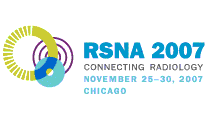
Abstract Archives of the RSNA, 2007
Christopher Barker, Presenter: Nothing to Disclose
Nai-Kong V. Cheung MD, PhD, Abstract Co-Author: Nothing to Disclose
Brian H. Kushner MD, Abstract Co-Author: Nothing to Disclose
Kim Kramer MD, Abstract Co-Author: Nothing to Disclose
Shakeel Modak MD, Abstract Co-Author: Nothing to Disclose
Cesar Della-Bianca PhD, Abstract Co-Author: Nothing to Disclose
Haritha Bodduluri MD, Abstract Co-Author: Nothing to Disclose
Suzanne L. Wolden MD, Abstract Co-Author: Speakers Bureau, Cytogen Corporation
Neuroblastoma (NB) frequently metastasizes to the skull, often diffusely involving the calvarium and skull base. Radiotherapy may enhance local control; however, irradiating the brain is highly undesirable in young patients. The purpose of this study was to describe the technique, toxicities and outcome of patients with high risk NB metastatic to the skull treated with brain-sparing skull radiotherapy (BSRT).
Between 1999 and 2007, 32 patients with INSS stage 4 high risk NB, aged 2-32 years (median 5 years), underwent combined modality therapy, including radiotherapy to the whole skull using a brain-sparing technique never previously described in this population. Photons were used to treat the outer calvarium and skull base while 6 MeV electrons were used to treat the lateral aspect of the skull. Dosimetric analyses were performed to compare the BSRT technique to a whole brain radiotherapy (WBRT) technique. All patients had CT and/or MRI, 123I-metaiodobenzylguanidine and/or PET imaging at ~3 month intervals. Patients were either treated to consolidate upfront induction therapy (n=23) or to palliate relapsed disease (n=9).
Thirty-one of 32 patients (97%) completed the full course of BSRT. Twenty-five (78%) patients received BSRT twice daily with 1.5 Gy to a total dose of 21 Gy. Of the remaining 6 patients: 3 (9%) received 2 Gy once daily (total dose 30 Gy); 1 (3%) received 1.8 Gy once daily (total dose 21.6 Gy); 1 (3%) received 3 Gy once daily (total dose 30 Gy), 1 (3%) patient received 1.5 Gy twice in one day, and thereafter was treated with 1.8 Gy once daily (total dose 30 Gy). One patient experienced a brief treatment delay not related to BSRT. Median follow-up was 20 months (range 1-83 months). Compared to WBRT, BSRT delivered a higher dose to the skull bones (104% vs. 102% of prescribed dose), with half the mean dose to the whole brain (52% vs. 104% of the prescribed dose). Acute toxicities consisted of grade 1 nausea and/or vomiting in 9 patients. Endocrine evaluation in 25 patients revealed grade 1 and grade 2 primary hypothyroidism in 3 and 1 patients, respectively. One patient developed grade 2 secondary hypothyroidism. Three patients developed long-term hair thinning, with 1 patient reporting patches of permanent epilation near his forehead. Neurocognitive dysfunction was noted in 2 patients. Sensorineural hearing loss in speech frequencies was noted in 2 of 8 patients assessed. Patients had an average of 6 skull bony sites of NB (range 3-10). Radiographic response to therapy was noted in 89% of patients. Pain alleviation was noted in all patients (n=4) who presented with headache. All patients maintained their performance status, with 52% demonstrating an improvement after BSRT. The actuarial rate of disease control in the skull was 83% and 60% one year after starting BSRT in patients treated as consolidation and palliation, respectively.
BSRT in patients with diffuse skull metastases offers dosimetric advantages over WBRT and results in good local control when used in the consolidative setting. The technique is well tolerated and while toxicity appears acceptable, longer follow-up is necessary
Barker, C,
Cheung, N,
Kushner, B,
Kramer, K,
Modak, S,
Della-Bianca, C,
Bodduluri, H,
Wolden, S,
Brain-Sparing Radiotherapy for Neuroblastoma Skull Metastases. Radiological Society of North America 2007 Scientific Assembly and Annual Meeting, November 25 - November 30, 2007 ,Chicago IL.
http://archive.rsna.org/2007/6000557.html

